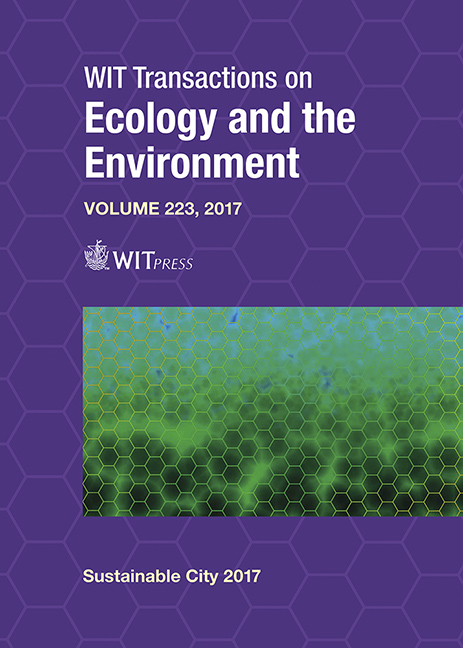SAHARAN CITY AND THE PROBLEMS OF URBAN STRUCTURE: A CASE OF THE MICRO-REGION OF SIDI OKBA, ALGERIA
Price
Free (open access)
Transaction
Volume
223
Pages
12
Page Range
59 - 70
Published
2017
Size
1,165 kb
Paper DOI
10.2495/SC170061
Copyright
WIT Press
Author(s)
BENSMINA LATOUI, FARHI ABDALLAH
Abstract
The services are localized according to their sector, in various territories of varying size, so the real organizational unit is constituted by all the centers necessary to provide all the services required by economic activities and the life of the population. In this research, the focus is on the micro region of Sidi Okba, Algeria. This micro regional area consists of several urban and rural centers of different population sizes, different socio-economic situations and a variety of articles related to easements and equipments. The layout of all components of the territory and their potential seem to impose a state of affairs which reflects hypothetically inconsistency and imbalance of its spatial structure which deserves to be diagnosed in order to understand the strengths and weaknesses which characterize it and correct the hiatus in order to achieve balance and consistency as sought by the government. This finding, also shared by managers at different levels of responsibility, begs various research questions: This imbalance is it related to the uneven distribution of public facilities on the centers in this micro region? Or the imbalance related to the demographic distribution of its human settlements? Or even to the poor management in terms of infrastructure and economic activities? The answer to these questions lead to poor urban planning that has been established for many years as head of the inconsistency of the urban structure of the sub-region of Sidi Okba. This research will try to highlight the reality of this spatial entity by using various techniques and analysis models such as gravity models (Reilly model), statistical demographic models (Zipf and Beckmann models) Multi-criteria models (AMC), statistical processing models, as well as the systemic approach that considers the space as an organized whole with inter-related, inter-dependent and inter-active elements of composition.
Keywords
urban structure, urban planning, micro-regional space, urban demography, urban imbalance





